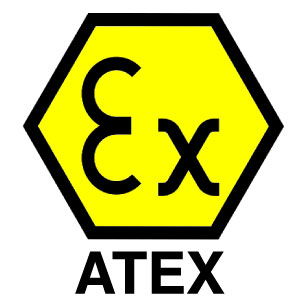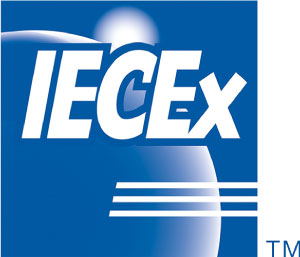ATEX and IECEx are two different legislations that are not separated from each other in purpose but in content. ATEX and IECEx differences vary in terms of jurisdiction and articles. However, both are designed to ensure security and make trading easier and faster.
What is ATEX?
 ATEX is derived from the French phrase "atmosphere explosible" and is abbreviated. It is a system that is processed on the determination of flammable substances. Atex ensures that necessary measures are taken to take precautionary measures and indicate the explosion situation that will occur. While ATEX was a completely voluntary agreement in the first years, today it has become a required condition for all countries within the European Union, as well as for other countries with the possibility of joining the European Union.
ATEX is derived from the French phrase "atmosphere explosible" and is abbreviated. It is a system that is processed on the determination of flammable substances. Atex ensures that necessary measures are taken to take precautionary measures and indicate the explosion situation that will occur. While ATEX was a completely voluntary agreement in the first years, today it has become a required condition for all countries within the European Union, as well as for other countries with the possibility of joining the European Union.
The aim of ATEX has been to prevent and take precautionary measures against a possible fire situation. It is especially necessary in the industrial field. There are many products that pose a fire hazard in factories. Diagnosis of these products enables possible measures to be taken. Fire can occur for many different reasons. These can be electrical fires as well as gas related fires. ATEX is essential especially in paint, textile, gas, chemistry, mining, fuel and plastic production and processing plants.
Atex became mandatory in 2003 and it has become one of the desired procedures especially in countries that trade with European Union countries. Atex is divided into classes within itself, that is, there are some degrees. While this rating may be related to the substance itself, a classification according to the degree of danger is also possible. The factors that determine the Atex classes are factors such as heat, gas, fire prevention products, protection, the area where the product will be used, the area where the product will be located, and the certificate.
It has two processes as ATEX 100a and Atex 137. Atex 100a is the first legislation approved by the European Parliament in 1994. ATEX 137, on the other hand, is a legislation approved in 1999 and based on worker safety. While Atex European Union is a generally regulated legislation, IECEx is a worldwide standard. This is the most fundamental difference between the Atex-IECEx differences.
What is IECEx?
 The main goal of IECEx is to determine the possible combustion situation, while at the same time ensuring the safety of the tools and workers in this environment. Therefore, it has a much broader perspective. IECEx takes advantage of having an international perspective. Especially in this technological age where world trade is seen, it is necessary to form a common security understanding. IECEx, on the other hand, has the task of closing this gap. IECEx is entirely voluntary. In other words, as a result of a brand not choosing IECEx, not working with that brand is an initiative. However, it is very advantageous to provide an international assessment. IECEx comes with other benefits as well. It speeds up the certification process especially for brands and products. It also shows the reliability of the products by contributing to the cost.
The main goal of IECEx is to determine the possible combustion situation, while at the same time ensuring the safety of the tools and workers in this environment. Therefore, it has a much broader perspective. IECEx takes advantage of having an international perspective. Especially in this technological age where world trade is seen, it is necessary to form a common security understanding. IECEx, on the other hand, has the task of closing this gap. IECEx is entirely voluntary. In other words, as a result of a brand not choosing IECEx, not working with that brand is an initiative. However, it is very advantageous to provide an international assessment. IECEx comes with other benefits as well. It speeds up the certification process especially for brands and products. It also shows the reliability of the products by contributing to the cost.
IECEx speeds up the commercial process considerably, so it is much easier for an IECEx certified product to go abroad and enter another country. This will increase the commercial denominator. Member countries, on the other hand, are actually many countries that direct trade. Many countries such as Japan, England, Italy, India, Russia, America, Korea, Switzerland, China, Netherlands, Canada volunteer to IECEx.
What are the Differences Between Atex and IECEx?
Among the ATEX - IECEx differences, the first one is the jurisdiction. Atex's jurisdiction is limited to European Union countries and candidate countries. However, IECEx has an international jurisdiction and has no country restrictions. Therefore, to comply with IECEX, it is sufficient to just meet the standards. Another difference is that although ATEX was on a voluntary basis at the first stage, it became mandatory afterwards. However, IECEx has been based on volunteerism since day one and it will be enough to meet the conditions. While ATEX only facilitates trade between the European Union and candidate countries, IECEc facilitates trade between all countries of the world, which has a much larger volume. Although the differences between ATEX and IECEx are obvious, it is recommended to have both. At the same time, both are fundamentally important in terms of ensuring the safety of materials, the area where they are located, and the workers.